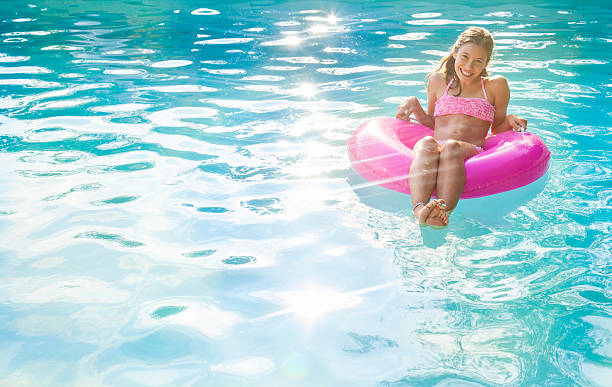Title: The Role of Cyanuric Acid in Pool Stabilization: Balancing Act
Introduction:
Maintaining a sparkling, clean pool is a joy for any pool owner, but it requires careful attention to detail. One crucial component in this maintenance routine is cyanuric acid. In this blog post, we’ll explore the vital role of cyanuric acid in pool stabilization and the delicate balancing act it entails for pool owners.

Understanding Cyanuric Acid:
Cyanuric acid, often referred to as pool stabilizer or conditioner, plays a pivotal role in maintaining the chlorine’s effectiveness in outdoor pools. Its primary function is to protect chlorine from degradation caused by ultraviolet (UV) sunlight. Without cyanuric acid, chlorine would rapidly dissipate under the sun’s rays, leading to frequent and excessive chlorine additions.
The Role of Cyanuric Acid in Pool Stabilization:
Cyanuric acid acts as a shield, forming a protective barrier around the chlorine molecules in the water. This barrier helps to reduce chlorine loss due to UV radiation, thereby extending the chlorine’s lifespan in the pool. By stabilizing the chlorine levels, cyanuric acid ensures that the pool remains adequately sanitized, preventing the growth of algae and harmful bacteria.

Maintaining the Balance:
However, achieving the right balance of cyanuric acid is crucial. While it’s essential for stabilizing chlorine, excessive levels of cyanuric acid can lead to problems. High cyanuric acid concentrations can cause a condition known as “chlorine lock,” where the chlorine becomes ineffective in killing bacteria and algae. On the other hand, too little cyanuric acid leaves the chlorine vulnerable to rapid degradation, requiring frequent and excessive chlorine additions.

Finding the Sweet Spot:
Finding the perfect balance of cyanuric acid requires regular testing and monitoring of the pool water. Pool owners should aim for cyanuric acid levels between 30 to 50 parts per million (ppm). This range provides optimal protection for chlorine without risking chlorine lock. Testing kits specifically designed for cyanuric acid measurement are readily available and should be used regularly to maintain proper levels.

Factors Influencing Cyanuric Acid Levels:
Several factors can influence cyanuric acid levels in a pool, including sunlight exposure, rainfall, and the frequency of pool use. Pools exposed to intense sunlight may require higher cyanuric acid levels to compensate for increased UV radiation. Conversely, heavy rainfall can dilute cyanuric acid levels, necessitating adjustments to maintain the proper balance.

Tips for Maintaining Cyanuric Acid Levels:
- Regular Testing: Test the cyanuric acid levels in your pool water at least once a month, especially during the summer months when UV radiation is most intense.
- Proper Application: When adding cyanuric acid to your pool, follow the manufacturer’s instructions carefully to avoid over or under-dosing.
- Monitor Sunlight Exposure: Be mindful of your pool’s exposure to sunlight and adjust cyanuric acid levels accordingly to maintain optimal protection for chlorine.
- Diligent Maintenance: Keep up with routine pool maintenance tasks, such as skimming, vacuuming, and filtration, to minimize the need for excessive chlorine and cyanuric acid additions.

Conclusion:
In conclusion, cyanuric acid plays a vital role in pool stabilization, serving as a protective shield for chlorine against UV degradation. However, achieving the right balance of cyanuric acid is crucial for maintaining a clean and healthy pool environment. By regularly testing and monitoring cyanuric acid levels, pool owners can ensure optimal chlorine effectiveness while avoiding the pitfalls of excessive cyanuric acid concentrations. It’s truly a balancing act that requires attention to detail and diligence, but the result is a pristine pool that can be enjoyed all season long.

Can you be more specific about the content of your article? After reading it, I still have some doubts. Hope you can help me.
Thank you, your article surprised me, there is such an excellent point of view. Thank you for sharing, I learned a lot.
I don’t think the title of your article matches the content lol. Just kidding, mainly because I had some doubts after reading the article.
I don’t think the title of your article matches the content lol. Just kidding, mainly because I had some doubts after reading the article.
Can you be more specific about the content of your article? After reading it, I still have some doubts. Hope you can help me.
Your article helped me a lot, is there any more related content? Thanks!
Can you be more specific about the content of your article? After reading it, I still have some doubts. Hope you can help me.
I don’t think the title of your article matches the content lol. Just kidding, mainly because I had some doubts after reading the article.
Can you be more specific about the content of your article? After reading it, I still have some doubts. Hope you can help me. binance
Can you be more specific about the content of your article? After reading it, I still have some doubts. Hope you can help me. binance
Can you be more specific about the content of your article? After reading it, I still have some doubts. Hope you can help me.
I don’t think the title of your article matches the content lol. Just kidding, mainly because I had some doubts after reading the article. https://www.binance.com/ES_la/register?ref=T7KCZASX